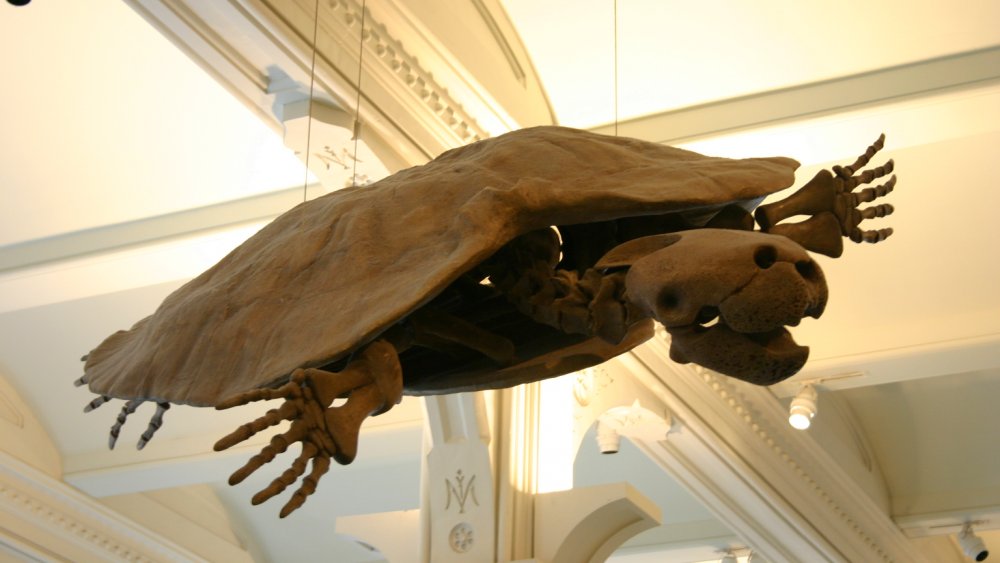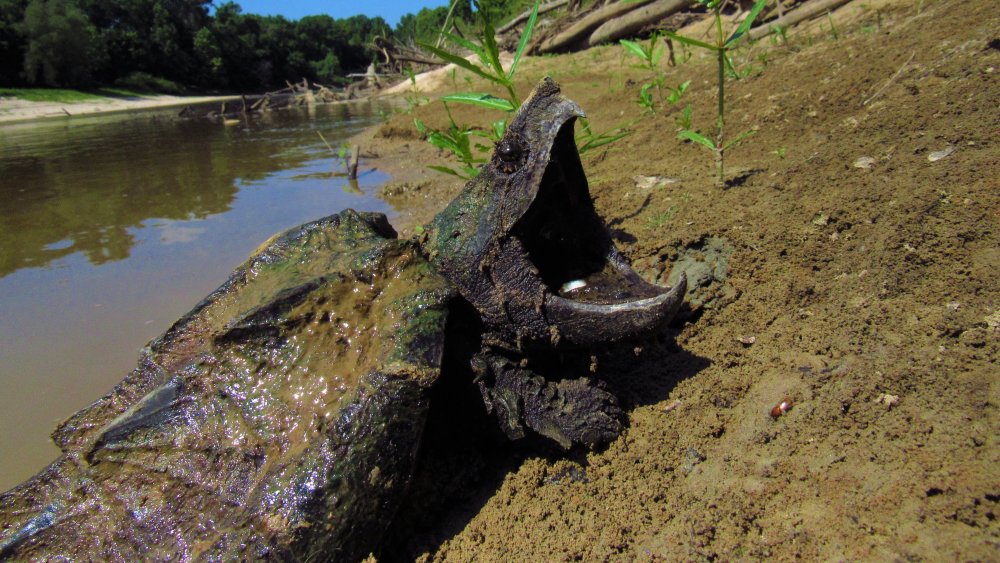Shell Shock: This Turtle May Have Been The Largest To Ever Live
No, not Leonardo, Donatello, Michelangelo and Raphael. These prehistoric behemoths were neither teenage nor mutant, though they apparently fought each other like ninjas. An 8-million-year-old turtle shell discovered in Venezuela measures just shy of 8 feet in diameter, clearing the hurdle to become the largest complete turtle shell ever unearthed. This stunning fossil belonged to a long-extinct species of marine turtle known as Stupendemys geographicus. The reptilian beast lived during the Miocene epoch and roamed the region which is now the northern half of South America.
If you're trying to picture what kind of turtle could create a shell of this magnitude, just imagine a VW bug with flippers and a retractable head. Scientists believe that S. geographicus weighed in at around 2,500 pounds. That's 100 times bigger than its closest living relative today (the Amazon river turtle, if you were wondering). Even the marine leatherback, the current heavyweight champion of turtledom, tops out at around half the size of S. geographicus.
S. geographicus was a fighter
Marcelo Sanchez-Villagra, director of the Paleontological Institute and Museum at the University of Zurich, said in a statement that S. geographicus is likely the largest turtle that ever existed. It's certainly the largest in our fossil record. During the Miocene epoch, the area that is now Venezuela, Colombia and Brazil, was covered in warm wetlands and lakes — a perfect habitat for monster amphibians. Researchers believe these ideal conditions likely contributed to S. geographicus attaining its incredible girth.
Scientists first described this species 1974, but the discovery of the intact shell is helping them answer a lot of lingering questions. Researchers examining the shell discovered unique "horn-like" protrusions anchored at the front of its carapace. They believe the turtles used these weapons to engage in male-on-male combat for reproductive or territorial supremacy. Although most turtles today are thought of as docile, this combative behavior persists in modern species like the snapping turtle.
A caiman tooth discovered embedded in another fossilized shell suggests that this bruiser didn't limit himself to intraspecies combat. S. geographicus likely went to war with other massive predators like the crocodilians of its time, a family that included Purussaurus and Gryposuchus (36- and 33-foot monsters, respectively).
Turtle power, indeed.

